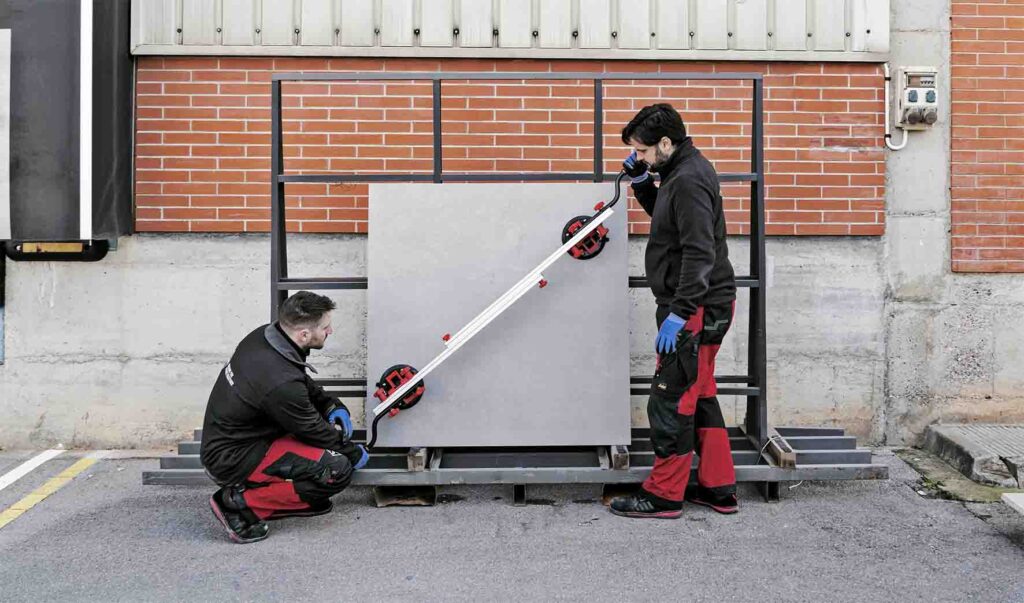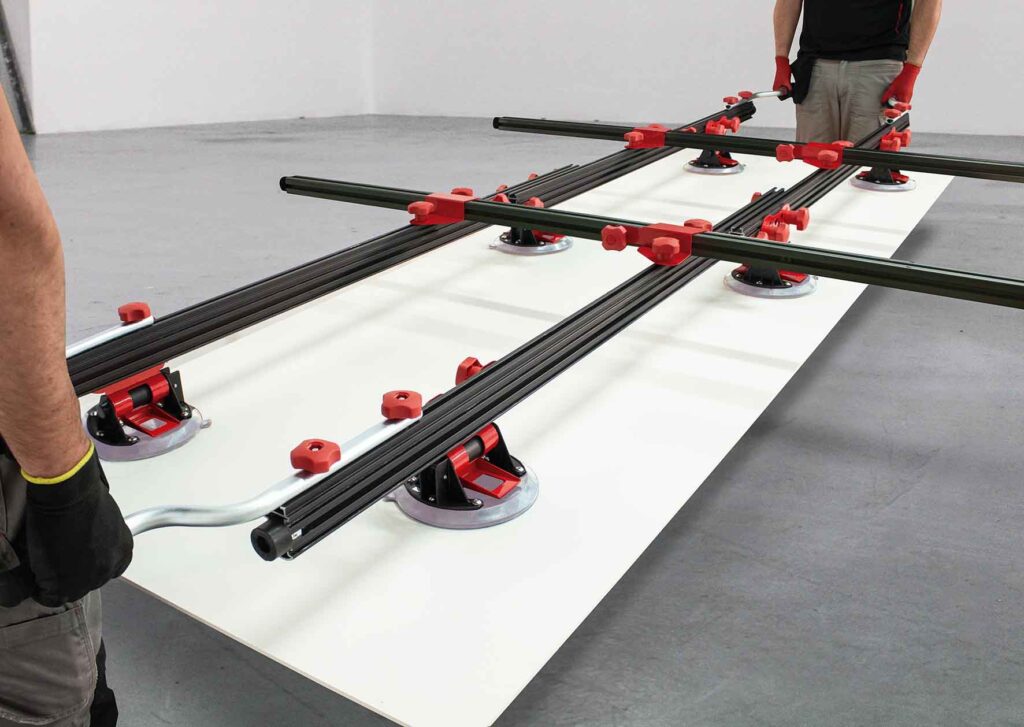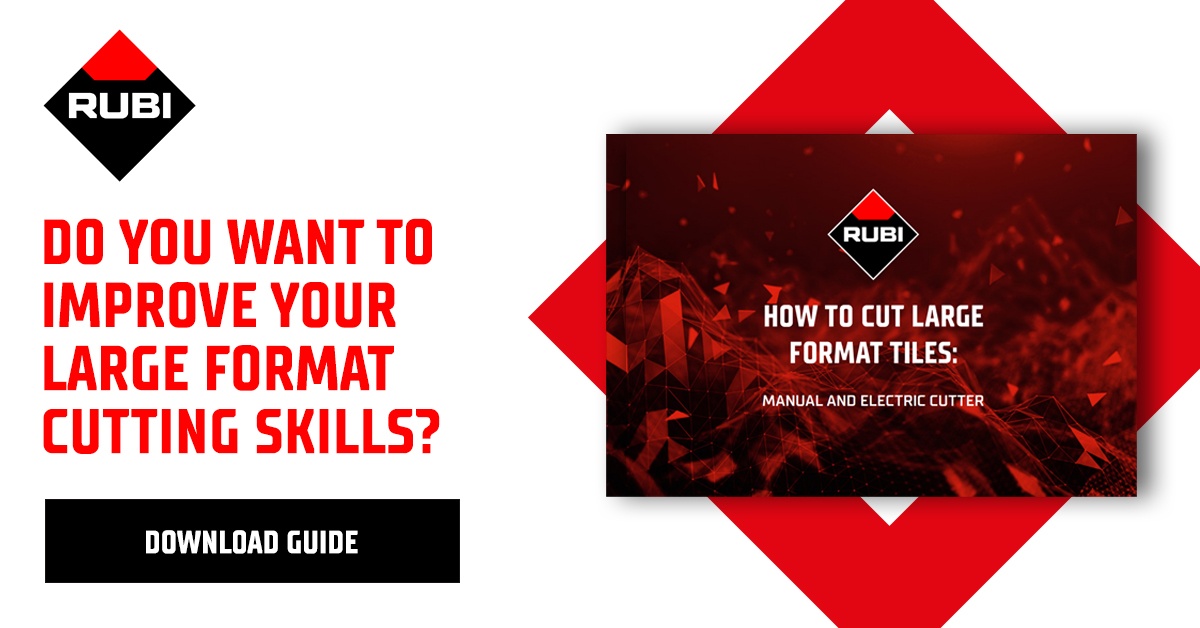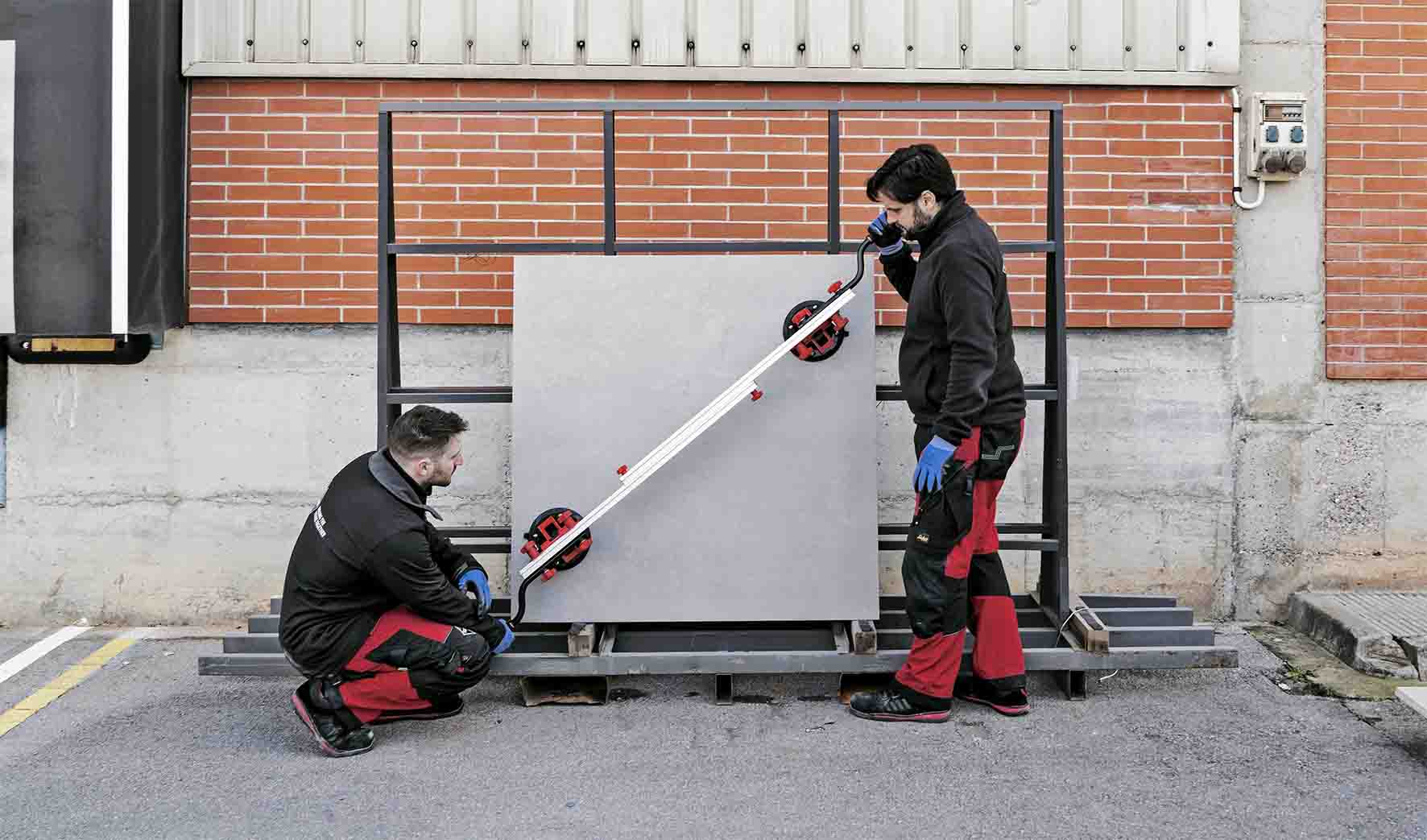Laying large format ceramic tile is currently a big trend in the construction sector. Knowing how to tile this format is a big benefit. They are a solution that combines practicality with aesthetic or decorative objectives, both indoors and outdoors.


WHAT IS LARGE FORMAT CERAMICS?
We understand large format to be any tile that has one of its sides measuring more than 40 cm.
Tiles of this format are used more and more frequently, both in new buildings and in renovations. The most common formats are currently 60×60, 60×120, 30×120, 120×120, 75 x 150 cm, among others.
ADVANTAGES OF LARGE FORMAT CERAMICS
Large format ceramic tile provide a greater sense of spaciousness, create a sense of continuity, and provide many varied applications.
On the other hand, while laying each piece involves more time and effort, each piece covers more surface area. This means that the number of tiles installed is smaller. Large-format ceramic tiles optimise the time and resources used, one of the most important factors in any construction project.
IS IT COMPLICATED TO LAY LARGE FORMAT CERAMIC TILES?
The laying of large format ceramic tile does require some adaptation to the laying techniques and tools used. In order to handle these larger pieces with ease, follow these tips to achieve fully satisfactory results:

- Tip 1: It is very important that the substrate is a stable and perfectly flat surface. If the substrate isn’t meeting the requirements, it isn’t suitable for large format ceramic tiles. Make the changes necessary before proceeding.
- Tip 2: Back buttering is vital for large formats. This involves a thin layer of adhesive on the back of the tile and on the substrate. We recommend using a trowel with a tooth suitable for the format of the tile.
- Tip 3: The use of suction cups is highly recommended. Not only to be able to place the tiles much more comfortably, but to adjust their position and check the coverage of adhesive.
- Tip 4: To ensure a perfectly flat finish and to avoid any unevenness, we recommend using a levelling system to prevent them from moving during the setting process.
- Tip 5: In large format ceramics, the tile-to-tile joint is more important than ever. We should use crosspieces and “T “s, which make it possible to overcome the small dimensional variations in some tiles. In addition, this favours the setting through the joints. The use of levelling systems does not exempt the use of spacers and T-spacers.
- Tip 6: As far as cutting is concerned, large-format ceramic tiles can be cut with both manual and electric cutters. But make sure that models suitable for large formats are available.

As mentioned above, the growing popularity of large-format ceramic tiles is mainly due to the fact that its significant advantages outweigh the disadvantages related to transport and handling.
Along these lines, large-format ceramics continue to evolve and the presence of porcelain tile or XXL ceramics on the market is increasing, but we will talk about this on another occasion.



Post a comment